Among other places, the province of New Brunswick is famous for the Bay of Fundy, which is known as t
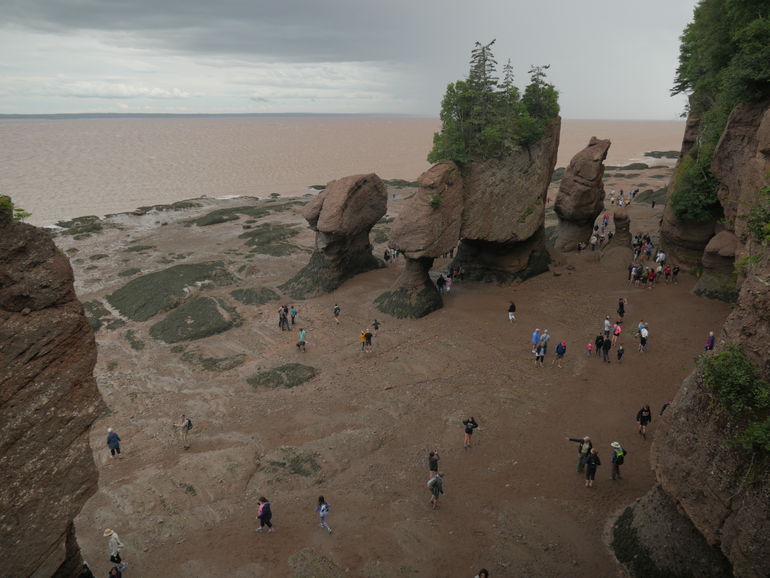
Video
Location
Hopewell Rocks Park is located on the shore of Bay of Fundy in New Brunswick, within one hour driving of the nearest airport at Moncton. And it is also just over three hours from Halifax, Nova Scotia, or two hours from Prince Edward Island.
Hopewell Rocks
The rock formations of Hopewell Rocks park stand along the shore, on the ocean’s bottom. And, depends on the tide, they are accessible by kayak or on foot. You can plan your visit in the way that, with the same entrance ticket, will allow you to visit the park during the high and low tides.
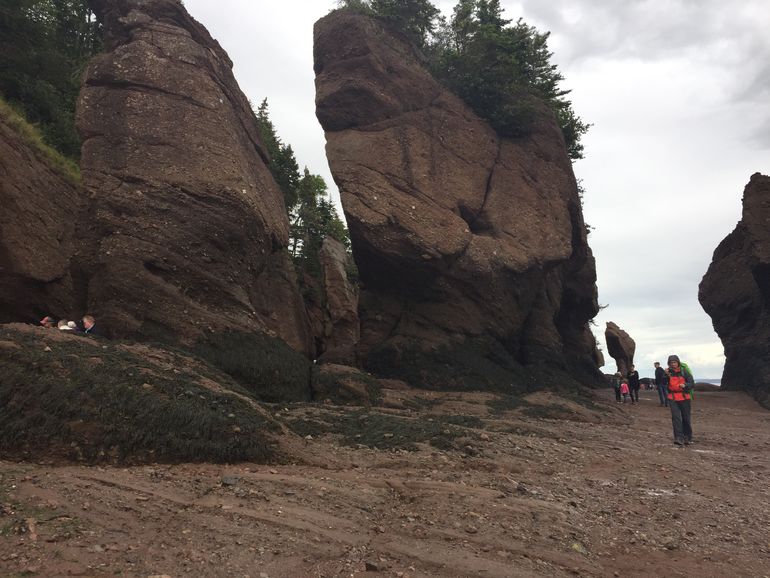
The further you walk away from the stairs the lesser the crowds become there. And you have more chances to have a perfect shot.
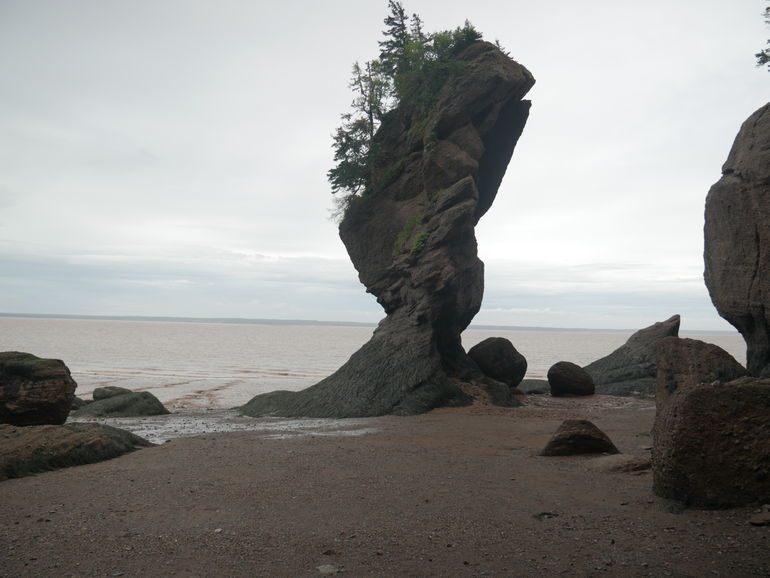
Take your time and enjoy the unique scenery of this place. And you can play the imagination games with kids while observing the rock formations.
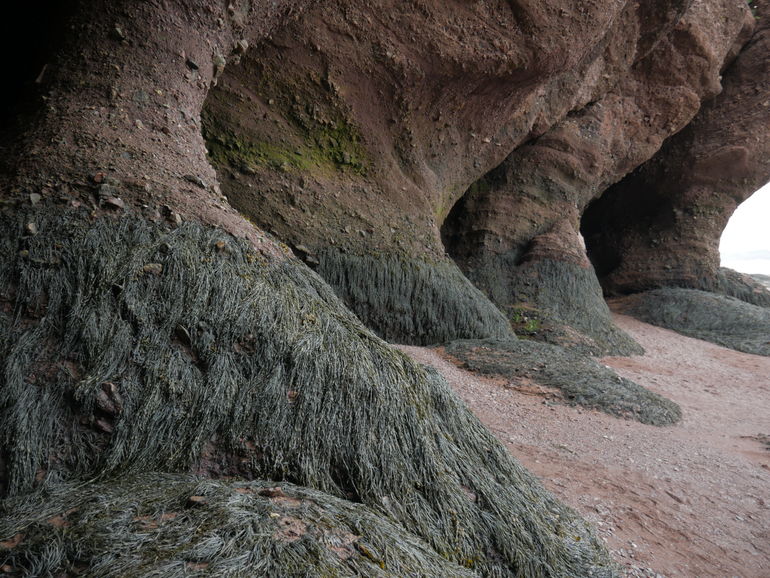
Additionally, there are three viewpoints from which you can observe the rocks, mudflats, Grindstone Island and the Bay of Fundy itself.
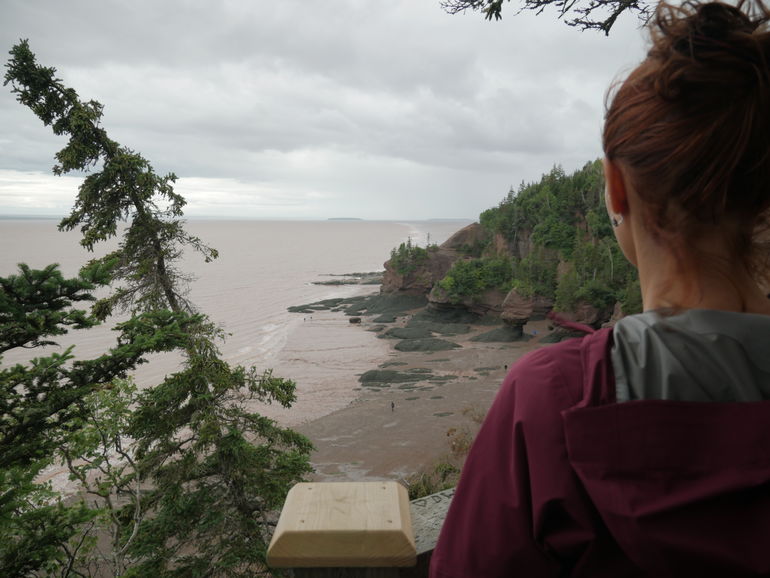
The Bay of Fundy
The Bay of Fundy, which captivates visitors today with its unique high tides, has been navigated by western European fishermen since the sixteenth century. The name Fundy is thought to be an English translation for the French word
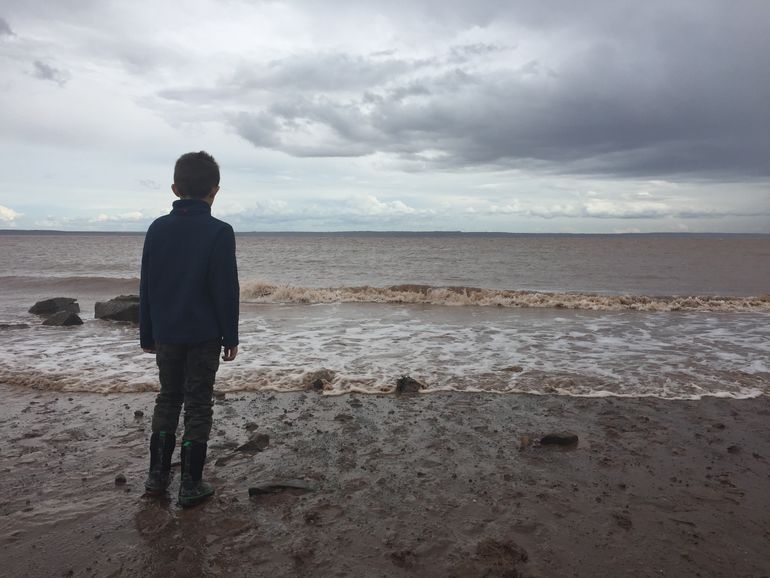
Daniels mudflats
Daniels Flats is an enormous mudflat that is 4 km (2.4 miles) wide and stretches almost as far as Grindstone Island. These mudflats w
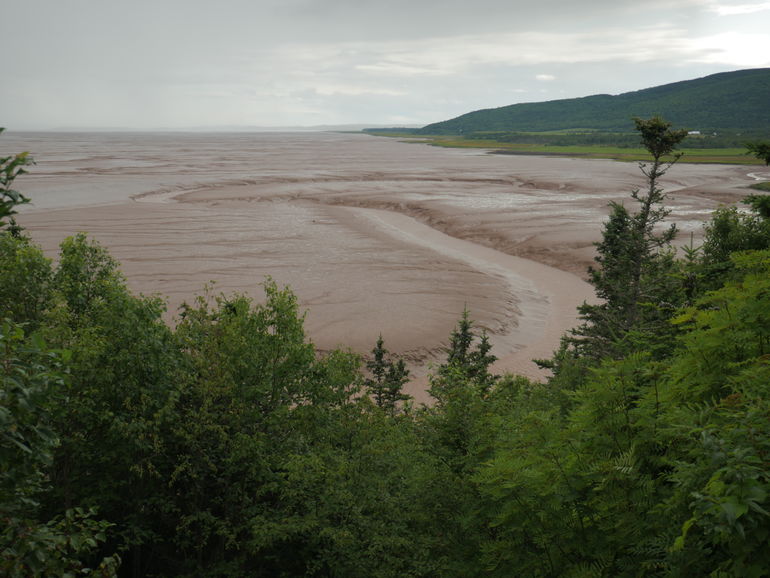
Grindstone Island
The history of Grindstone Island started from the nineteenth century when it was the prosperous grindstone quarry with its own lighthouse (now automated). But these days the Island is home to its original inhabitants – the birds. The rocky southern end of the island is inhabited by the colonies of gulls and cormorants. And the northern treetops are the residency of a large great blue heron rookery.
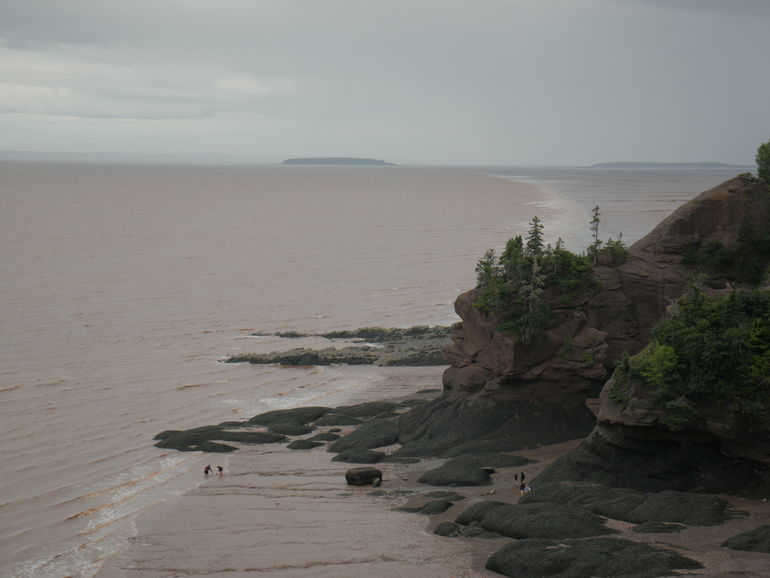
The Giant Tides of Fundy
It is hard to believe, but every 25 hours 160 billion tons of water moving in and out of the bay. Thanks to this movement, which is powered by the gravitational pull of the moon and sun, Fundy’s tides are among the highest in the world.
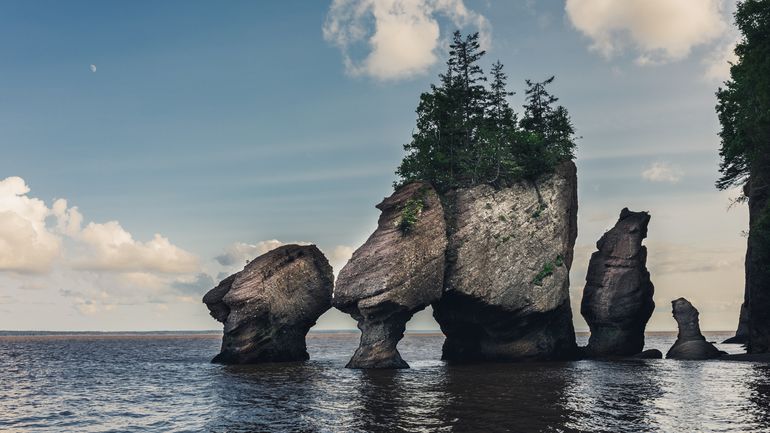
During the full and new moon phases, the gravitational pull of the sun and moon align. This allows them to magnify one another. Which results in higher than average tides or “spring tides”. When the moon is at right angles to the line between the earth and sun, the gravitational pulls work against one another. Which results in lower than average tides or “neap tides”.
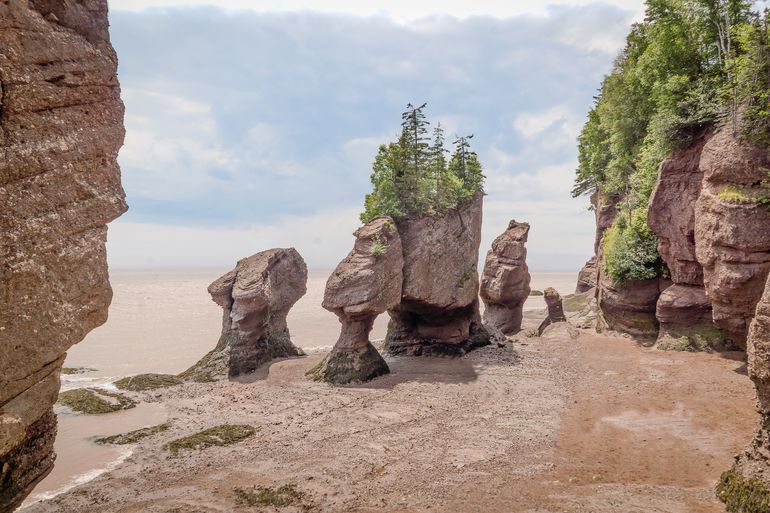
The tides start rising slowly but speed up until they are approximately halfway in. At their fastest, the tide can be rising straight upward at a rate of 13 feet (4 meters) per hour at The Hopewell Rocks.
Why the tides are so high here?
It caused by the shape and the length of the bay. The funnel shape of the bay (wide, deep at one end and narrow, shallow at the other), pushes the tides increasingly higher as they move up the bay. And the length of the bay causing a natural resonance. This resonance amplifies the effect of the funnel.
How high the tide is?
The tide rises 46 feet (14 meters) vertically and it also recedes almost two football fields horizontally.
Lover’s Arch is situated relatively high on the beach. The tide needs to rise 28 feet straight up before it touches the base of the Arch. The Fundy tides can then continue to rise another 18 feet (5.5 meters) before starting to retre
Tips for Hopewell Rocks
- Wear appropriate footwear when you visit the site during the low tide. As the bottom of the ocean is very muddy. This is especially relevant for the young explorers :).
- Keep in mind the tide schedule. Otherwise, you risk being trapped on the ocean floor.
- Don’t climb over rocks as they are eroded. And watch your step, because the bottom rocks are very slippery.
- Have with you a few dollars for the golf car, if you find yourself, or your kids, tired to hike back to the parking.
- There are mud-cleaning showers near the stairs to the ocean floor. So take with you some spare clothes and towels.
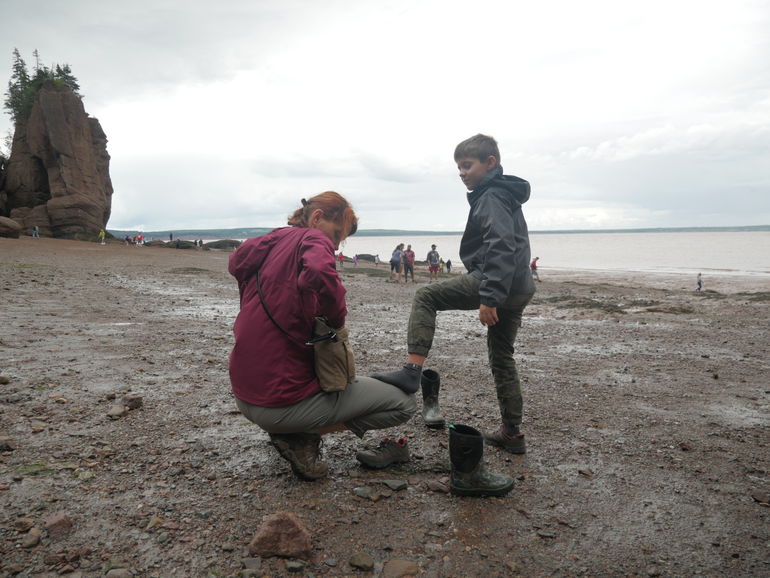
See you on the trail!

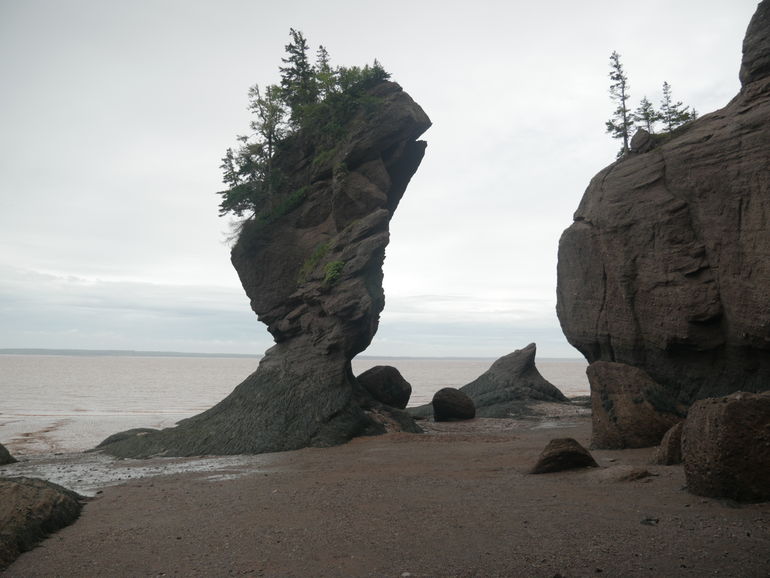
Leave a Reply